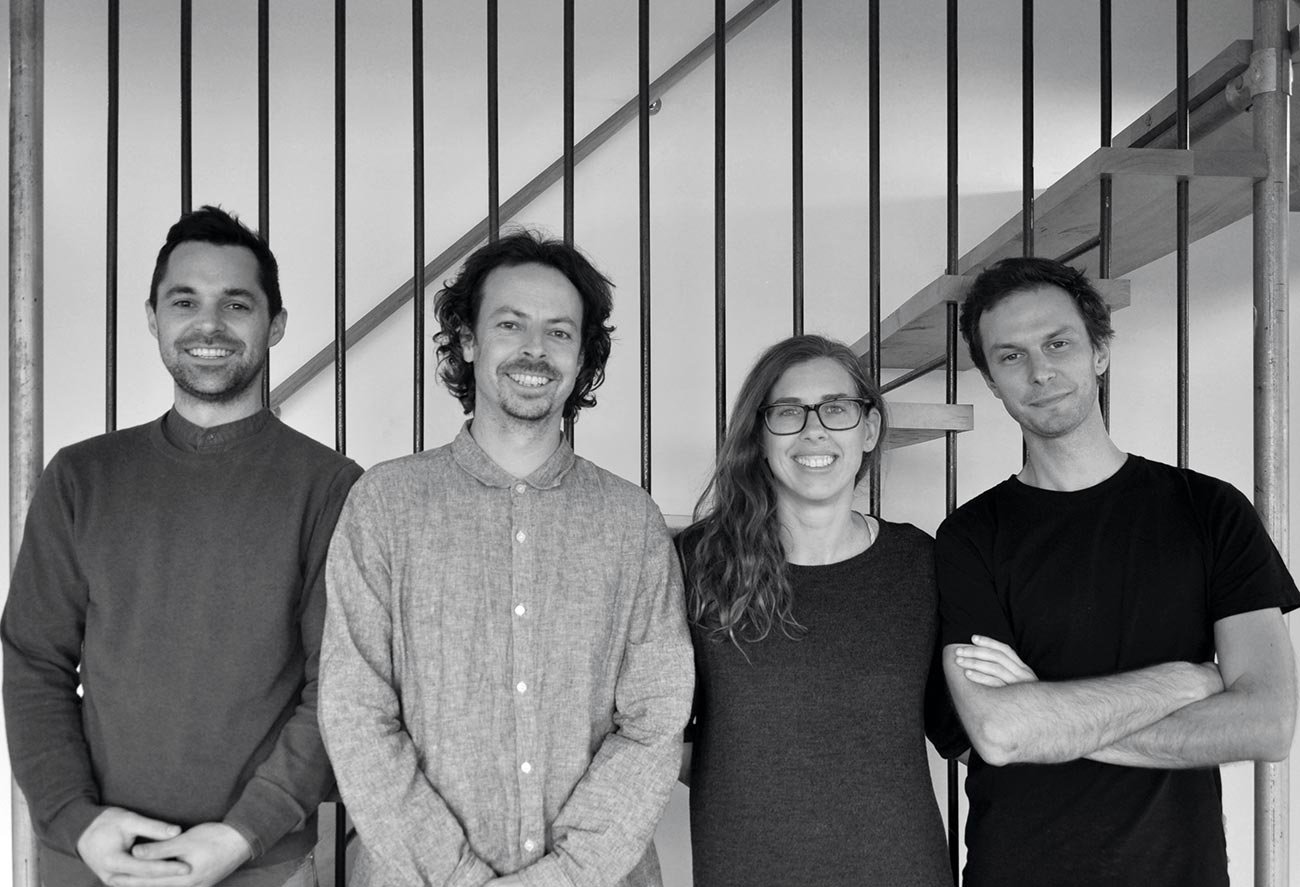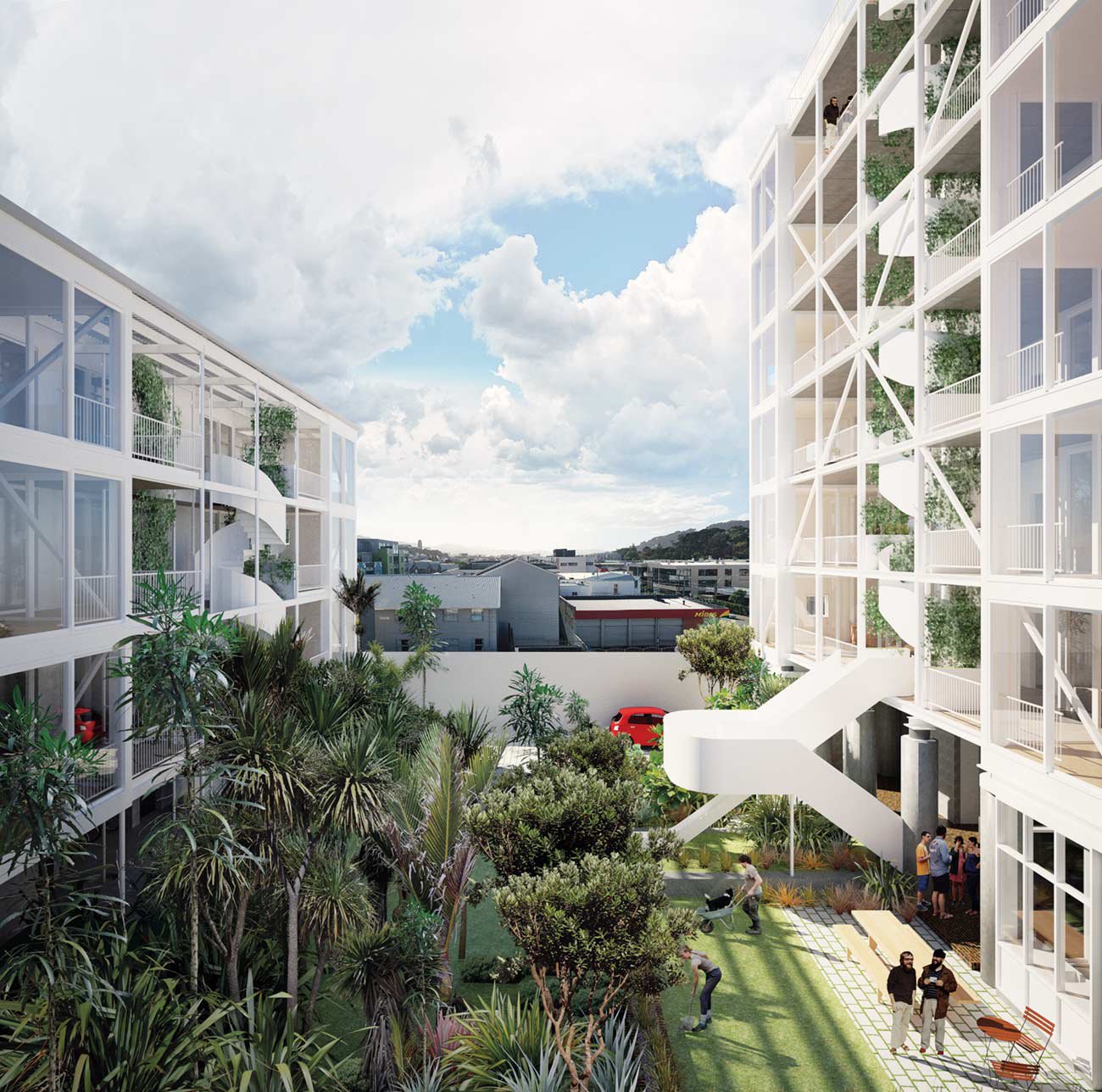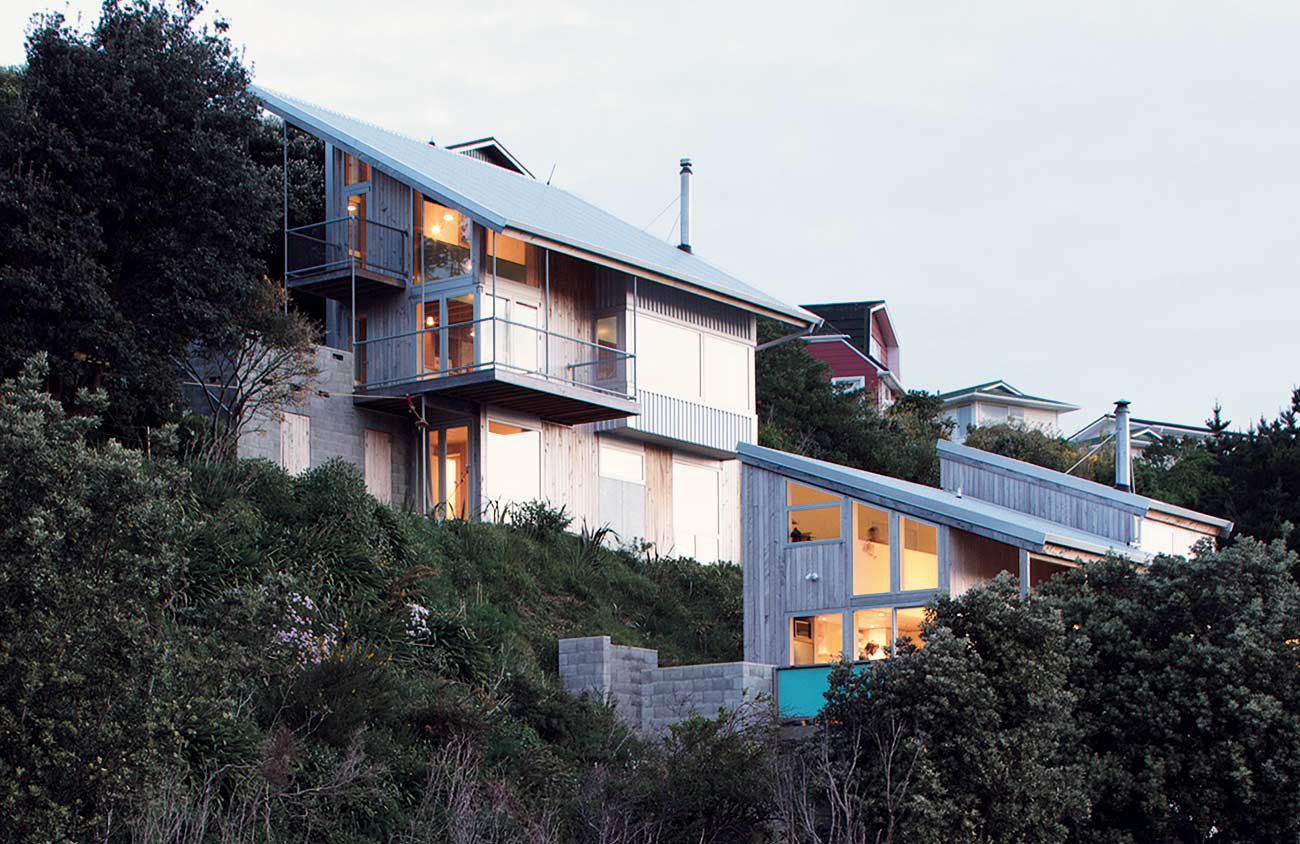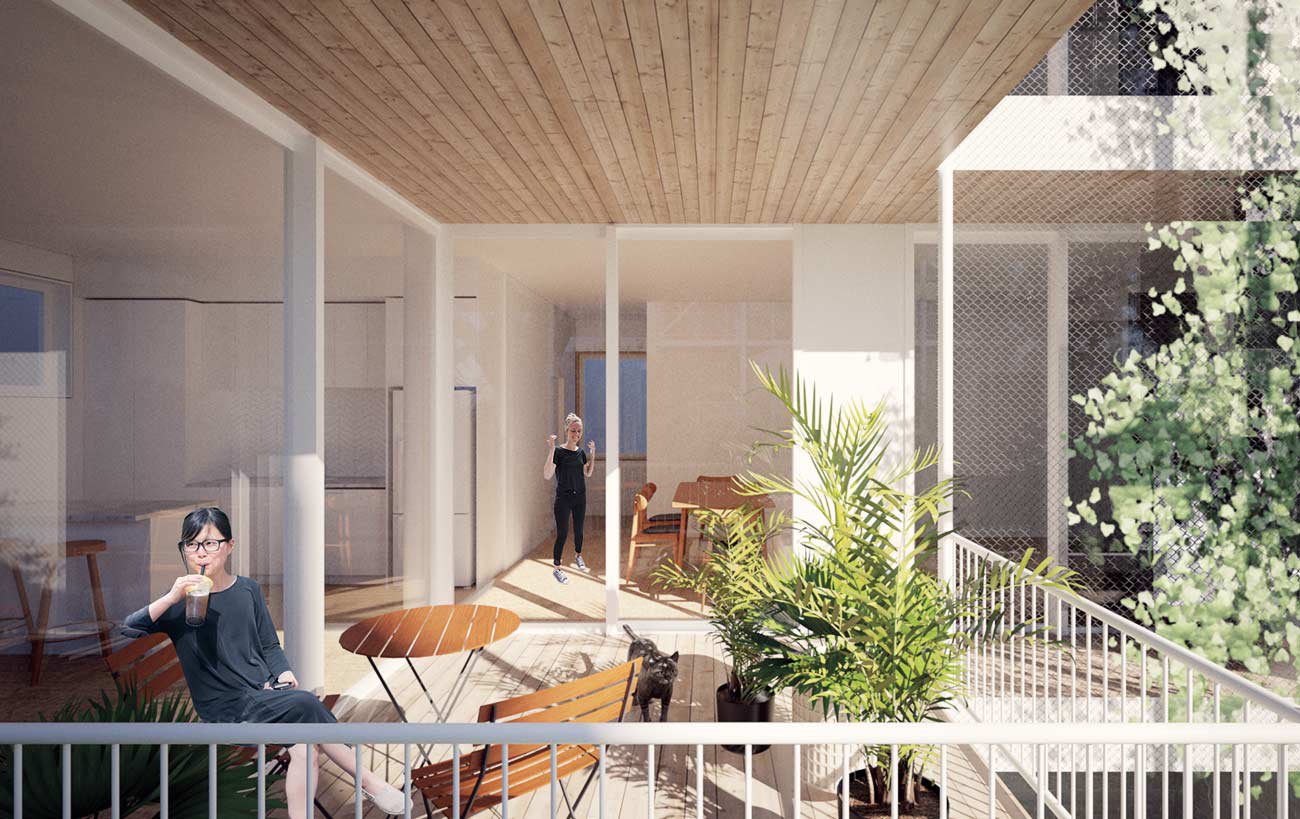New Zealand’s quarter-acre homeownership dream is increasingly threatened by the realities of a limited housing supply and a fiercely competitive real estate market. So how are Kiwis adapting and adjusting their expectations? What innovative, affordable and community-building homeownership solutions are out there to respond to our needs today?
By Anita Perkins
The creation of beautiful and affordable architecture is the daily pursuit of Wellington-based architects Caroline Robertson, Tim Gittos and Jesse Matthews of Spacecraft Architects. But this is no easy challenge in today’s world, where strongly embedded traditional expectations clash with what’s possible in the here and now.
“The idea of homeownership is a cultural thing that goes back to the colonial period,” says Jesse. “Now land is getting incredibly expensive, but we still retain that cultural idea that every single person should and could own their own house and their own piece of land, and we’re now doubling down on property speculation as the way to build wealth.”

Spacecraft Architects (from left) Scott McKenzie, Tim Gittos, Caroline Robertson and Jesse Matthews
Tim adds, “That’s why these alternative forms of development are starting to crop up now. Land is so hard to come by under the traditional model that people are asking how else can we do it?"
Economist Brad Olsen agrees. He sees new attitudes towards housing and homeownership emerging as society itself changes. Rather than the traditional template of three-or four-bedroom homes for ‘mum, dad, and two kids’, there’s increasing interest in smaller builds for the ageing population or larger builds for people who want to buy together.
-

“It might be that you bring together a group of friends to buy a house at least to get you over that original deposit threshold.”
Economist Brad Olsen
“That’s the struggle for a lot of people who are having to pole-vault onto the bottom of the housing ladder,” Brad says.

A cohousing development being built in Newtown, Wellington
Affordable options and adjusting expectations
To make housing more affordable, Brad says we need to focus more on densification. This means more townhouses and medium-rise apartments that are well connected to public transport and good amenities.
“That’s the sort of thing that I think Kiwi families will increasingly opt for because it’s more affordable. A lot of people are not interested in trying to find the perfect house – they’re just happy with a house.”
This pragmatic approach informs the work of Spacecraft Architects. Having said that, Tim, Caroline and Jesse also believe you don’t need to compromise on beautiful and aesthetically pleasing design.
“The simplest, most basic house we could design would be atmospherically so much better than basically any house you could buy,” Caroline says.
“It will keep heat better and be so much cheaper to run.”
Making their own affordable home a reality
As well as being business partners, Caroline and Tim are a couple and know what it’s like to live in a small house, having raised their first child and started their business in a 40-square-metre one-bedroom flat.
Feeling the need to upsize, they made the decision to buy a section in Wellington with another family they were close to and build two houses on it. This solution meant they could afford a section without needing a mortgage for the land, and their friends and neighbours feel like extended family.
Tim loves owning a section with trusted friends. “What we’ve got here is amazing. You share the load, and you share the financial, emotional and legal risks of doing things.”

Caroline Robertson and Tim Gittos’ Miramar home. Credit: David Straight
Community living in central Wellington
Caroline and Tim are taking this personal experience and using it as the basis for one of Spacecraft’s new projects – the Urban Habitat Collective (UHC), a co-housing development in Wellington.
Jesse says co-housing arrangements provide a housing option with a greater sense of community at a price tag comparable to surrounding urban housing. UHC will see people live in separate dwellings with common areas. Intelligent design features can help build a cohesive yet organically forming community.

Concept for the UHC co-housing development in Newtown, Wellington
The architects spent a lot of time in the planning phase surveying the future occupiers about what they wanted in a co-housing arrangement. This means the design is driven by commonalities in what the occupiers wish for as opposed to a market-driven developer approach.
Jesse and his partner will live in the UHC, as will Jesse’s parents. In his view, Western society has become too atomised and he sees the UHC as a way to counter this.
“There’s a layer missing between the nuclear family and the big bad wide world, which is a nice coherent community around you.”
Brad Olsen's tips for prospective homeowners
Make sure you have a good conversation with your bank about whether you will be able to afford the house you are offering on in the future and the impacts of your mortgage repayments on your lifestyle.
Think about where you would be comfortable enough living rather than exactly where you want to live. Options in the regions can be more affordable and offer lifestyle benefits.
Be open to different ways of getting on the property ladder. Rather than taking on all the debt yourself, you might want to consider pooling your resources with friends to purchase your first home.
Innovative and affordable contemporary design approaches by Spacecraft
Utilising marginal land
In some cases, thinking outside the box means building a house on what would previously be considered ‘marginal land’ such as steep hillsides. “Retaining this land brings the section cost up, but keeping a small house means it’s still manageable,” says Caroline.
Intergenerational living
One of Spacecraft’s recent projects was building a family home by subdividing an existing family property where three generations of the family lived in the new house. Not only does this help with the financial burden of homeownership, but it also fosters stronger bonds between children, parents and grandparents.
Friends living on the same section
Spacecraft is currently designing a communal housing project for a group of friends who have collectively purchased a plot of land. “We’re designing the community so that the nicest parts of the section are shared by the partners rather than trying to give everyone their own separate backyard,” says Tim.
Know someone who might enjoy this?
Read this next
-
March 2021
Made for today a century ago
-
March 2021
Helping Kiwi babies thrive
-
March 2021
Smooth sailing for Southern Spars
-
March 2021
Land, sea and myth: Revisiting Hawke's Bay
Money
See all-
March 2022
Taking an active approach to investing
-
July 2022
Saving through the storm
-
July 2022
The Curve: Raising financial literacy







